Clean Eating Tips
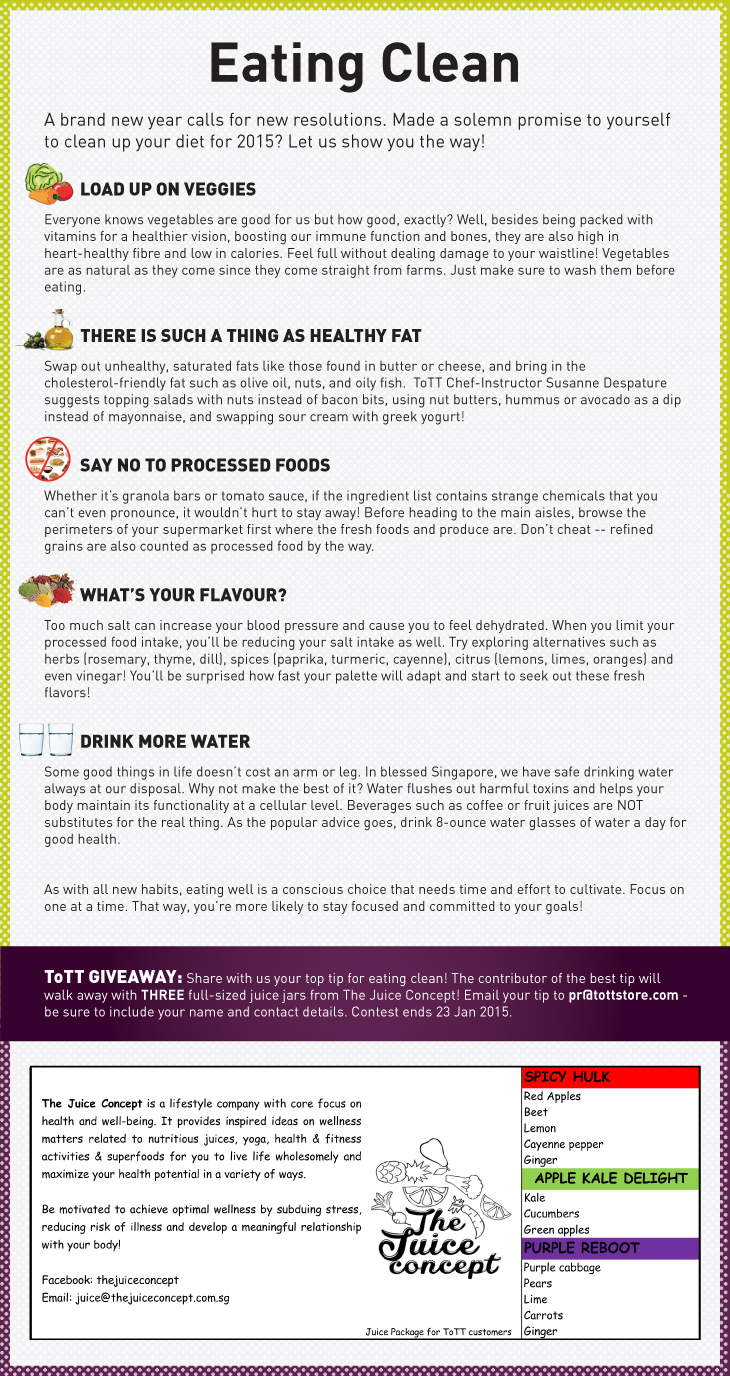

Molecular gastronomy has been gaining popularity in recent years , with celebrity chefs such as Ferran Adrià and Heston Blumenthal rising in prominence. The intriguing fusion of food science and culinary art presents exotic flavours, among them vegetable-spaghettis, salads with balsamic vinegar pearl dressing and the like. Bored with the traditional recipes? Give molecular gastronomy a go and the refreshing results could be worth it!
1) What exactly is molecular gastronomy?
Molecular gastronomy is not a new concept. Its roots can be traced back to second century BC where an anonymous author of a papyrus kept in London used a balance to determine whether fermented meat was lighter than fresh meat. Since then, many scientists have been interested in food and cooking, especially food preparation. The main objective of molecular gastronomy is to understand how food is affected by the various preparation factors and cooking methods by examining it at the molecular level. Infusing scientific knowledge into cooking helps with clearing up myths and old wives’ tales.
2) It is safe to use the ingredients in the latest gastronomy kits?
The latest molecular gastronomy cuisines might sometimes look more like science projects than edible food. While additives with names such as ‘sodium alginate’, ‘calcium salts’ and ‘xanthan gum’ might turn away purists insisting on using only ‘authentic’ ingredients; most of them are, in fact, of biological origin. While there is a purification process involved, the raw materials are usually drawn from marine, plant, animal or microbial. For example, sodium alginate is a salt extracted from the viscous liquid from the cell wall of brown algae. These additives are also used in scant amounts and strictly adhere to EU standards.
3) How can I kick start my molecular gastronomy journey?
Thankfully, there are convenient DIY kits which cost a mere fraction of the professional equipment seen in cooking shows.
One example is the gastronomy kit from Molecular-R, which is simple yet sufficient enough to create dozens of magical dishes. Its Cuisine R-evolution kit includes five types of food additives, pipettes, test tubes, a food-grade syringe and 50 simple recipes in a DVD. For those who want to dazzle their guests with extraordinary cocktails, the Molecular Mixology kit will fit the bill. You can deconstruct your favourite margarita, try layering a martini or serve your drinks in a large bubble and have it burst in your mouth for a different experience.
4) Methods used in molecular gastronomy
| Method | Definition | Additives involved |
| Spherification | The culinary process of shaping a liquid into spheres of liquid held by a thin gel membrane which visually and texturally resembles caviar. | Sodium Alginate Calcium Salts |
| Gelification | The process of turning a liquid into gel which is a solid, jelly-like material that can have properties ranging from soft and weak to hard and tough. | Agar-agar Carrageenan Gelatin Gellan gum |
| Emulsification | The process of turning a liquid into a light, airy foam. | Soy lecithin |
| Thickening | The process of increasing the viscosity of a solution or liquid/solid mixture without substantially modifying its other properties. | Xanthan gum |
| Effervescence | The escape of gas from another body and the foaming or fizzing that result from the release of the gas. An everyday example is seen in carbonated beverages such as soft drinks. | Popping sugar |
| Effervescence | There are different kinds of transformation. • Maltodextrin is a sugar that will turn any fatty liquid such as oil, bacon fat or melted chocolate into powder • Transglutaminase is an enzyme often referred to as “meat glue” that will bind food rich in proteins. |
Maltodextrin Transglutaminase |
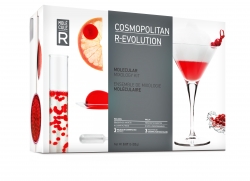
Cosmopolitan R-Evolution Kit (32 g)
Impress your friends with three recipes that push the boundaries of modern mixology! Add a molecular twist to your traditional cosmo sure to awe your guests! Serve a cosmopolitan bubble on a spoon that will pop in your mouth, top off your cocktail with a light fluffy cranberry foam or suspend citrus caviar in your drink.
1) How is silicone ware comparable to conventional ones?
Long-lasting: Silicone ware will not get out of shape, rust or break easily. Although its existence in the market has not been long enough to provide evidence about its durability, we do know that silicone is not biodegradable by nature. It is worth noting that some metal bakeware such as sheet aluminium does rust in the long run.
Thermal durability: Similar to other bakeware, silicone can also withstand cold and hot temperatures from between -40°C to +260°C. You can take it out from the freezer and put it into the oven immediately without a hitch.
Non-stick properties: Food can be easily removed without initial greasing, which is similar to non-stick bakeware. However, some users claim that this non-stick ability wears off after constant use in the oven over a long period of time.
Maintenance: Run it under hot water and wipe with a soapy cloth. Most silicone wares are also dishwasher safe and easy to clean as any conventional bakeware.
2) Is silicone safe?
The silicone used in cookware products is a type of inorganic elastomer which will not fume when in contact with high heat. Silicone tools made of 100% silicone is generally safe for cooking. Some low quality silicone wares include fillers in its composition, which can affect durability and release fumes and leach onto food items. Always check the manufacturer’s label before making a purchase.
3) What are the cons of using silicone cookware?
Too flexible: Silicone ware can be rolled or folded easily which makes storage effortless. However, this could also mean that your silicone cake mould and muffin trays might bend too much, causing fresh bakes to crumble or cake mixtures to spill over. If possible, let your silicone ware sit over a metal tray for better support.
Browning: There is minimal browning of your bakes when using silicone ware unlike traditional baking trays or tins.
Baking duration: Due to the differences in heat conduction with conventional aluminium or steel trays, you might need to adjust your baking timing as Silicone usually takes longer.
Static and dust: Silicone gradually builds up static electricity which causes the cookware to attract dust.
Cutting tools: Generally, silicone ware is coated with a layer of fibreglass. Avoid using sharp tools on your silicone ware to prevent cuts which could cause fibreglass contamination.
Buy only trusted brands. Pure silicone does not change colour when twisted. To check for fillers in silicone wares, pinch and twist a flat surface on the item. If white shows through, it is quite likely the product contains fillers.
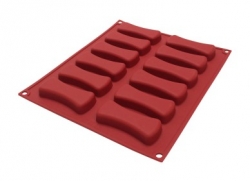
Established in the UK in 2010 initially as heart-healthy food website, The Cooking Doctor offers premium quality silicone bakeware, to make your baking more fun. Each product is designed with novice as well as professional bakers in mind. Bake healthy cakes, macarons and cupcakes using these silicone products.
Aluminium cookware is known for its light weight, ability to heat up quickly and affordability. It can be classified into three main types:
Sheet aluminium: This is the most common, where the metal is stamped or rolled into shape. Sheet aluminium is typically used in baking trays, cake tins and also in some stock pots and budget skillets. However, it can be highly reactive to acidic food such as tomatoes and citrus which can cause leeching onto the food, thus potentially damaging to one’s health.
Anodized aluminium: This form of aluminium goes through an electro-chemical process where a thicker layer of aluminium oxide is formed on the surface, sealing the reactive aluminium. This new layer is harder, non-porous and non-reactive which will not leech onto any acidic food being cooked. Anodized aluminium is also more resistant to chipping, cracking or peeling but is still susceptible to scratches. Once scratched, the anodized surface will be destroyed.
Cast aluminium: Molten aluminium is poured into a mould to create cast aluminium. This process causes microscopic air pockets to form inside the metal which increases its heat retention ability. Cast aluminium can heat up quickly with a low heat source. The downside for this metal is that is does not distribute heat as uniformly as compared to the other aluminium cookware and is considered brittle. As it is porous like cast iron, seasoning is required to maintain the state of the cookware. Some cast aluminium goes through the anodizing process which makes them non-reactive to acidic food.
Maintenance Tips:
Cast aluminium or Cast iron?
Cast Iron is highly durable if maintained well as it is made from an extremely durable metal. Take note to never add cold liquid in a hot pan: it will cause irreversible cracks and rust will form on the cracks which can lead to food contamination. A good quality cast iron cookware is an investment for serious cooks or the well-heeled.
Cast aluminium on the other hand, is less durable but lighter and cheaper. This is ideal for those who prefer less heavy lifting in the kitchen especially when handling larger cookware like stockpots. With proper care, cast aluminium can be a delight to use.
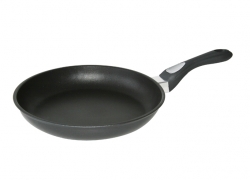
The de Buyer company was founded in 1830 and has been creating and manufacturing the best kitchen and pastry utensils for the professional and the hobby chef.
A blunt knife can be frustrating and potentially more dangerous to use as greater force is required to cut food items. This can result in slippage of the knife, which might lead to cutting your fingers or food bruised by the blunt blade rather than cut into it. With that, knife sharpening is important and doing it wrongly might damage your knife set all together. To ensure your knife set is properly maintained, here are some tips on getting the right knife sharpener.
1) What really happens when your knife dulls
The first thing that goes into most peoples’ minds is that the edge of the knife thickens and becomes blunt over time. In actual fact, the edge of the knife curls over at the top, which is impossible to see with the naked eye. The bluntness that you experience when cutting a knife is actually due to cutting on one side of the knife.
2) Honing Vs Sharpening
Although these two terms are used interchangeably, in the world of knives, they have very different meanings. Honing is the process of straightening out the bent or curved edge. Sharpening on the other hand removes particles of metal from the knife. When your knife is dull, the first step is usually to hone with a steel rod to straighten the blade. If the knife is still dull then it is time to sharpen it. Ideally, you should aim to maintain a good edge on your knives, don’t allow them to get really blunt as it’s harder to get the edge back on a neglected knife.
3) Types of knife sharpeners
Both electric and manual knife sharpeners have their own merits. Many people prefer the control and precision of manual knife sharpening systems. However, modern electric knife sharpeners can be incredibly effective and fast, especially if you’re willing to spend a little more.
Manual
Sharpening stone
Most often rectangular in shape, the sharpening stone may be half to several inches in thickness. There are several different varieties available that are made of a variety of man-made and natural materials like water stones and ceramic. They are available in coarse, medium and fine grit. The coarser the grit the more steel is removed when sharpening. Do take note that although ceramic is made of minerals like stone, it is less porous which provides a smoother more consistent surface for sharpening.
Sharpening steel
This tool is generally made of steel, which is used to re-align the knife’s edge. Running it across the steel will straighten the edge and the knife will be sharp again. It is also used after a knife is sharpened on a stone to remove the debris and any irregularities that may be left on the blade edge. The tool can also be glass, ceramic, or diamond-impregnated metal.
V-shaped knife sharpener
This is a convenient tool to sharpen a knife when a person is not comfortable with using a sharpening stone or steel. The tool’s casing holds two steel rods coated with diamond abrasive or rods made from tungsten carbide that are positioned to form a V-shape that is at a 20° angle for sharpening. One stage is coarser and is used for the first stage of sharpening. The second stage has a finer grind for finishing the sharpening process. The knife’s edge is pulled across the rods when sharpening. Four to six draws of the blade is usually sufficient to keep the blade well-honed. A guard is commonly attached to the sharpener so hands are kept safely away from the knife blades.
Electric
Electric knife sharpener
This sharpening unit contains sharpening wheels or stones that offer a quick alternative for sharpening knives. They have a guide that holds the knife at the perfect angle for sharpening. The sharpening wheels or stones are generally made out of sapphirite, ceramic, or are diamond plated. The blade is drawn through the guided slots a couple of times and the blade is sharpened.
Note that using an electric sharpener on a knife that has a bolster will not allow you to sharpen the heel of the blade. You will not be able to run the entire blade through the sharpener without damaging the heel of the knife.
In addition, be sure to pay close attention to what you are doing because the sharpener will have a tendency to grind more of the blade away than desired. When purchasing an electric knife sharpener, you may wish to opt for one with a diamond dust hone. Diamond dust is very effective at removing metal and is less likely to cause damage to the blade.
4) What to look out for in a good sharpener
Hard abrasive surface: A more abrasive surface would make your sharpening experience less tiring and more precise. Diamond is the hardest followed by tungsten carbide then polish ceramic.
Accurate angle guide: Some sharpeners, especially the sharpening stone kind require more practise to attain the right angle.
Multiple sharpening stages: The coarser surface is for sharpening the knife while the finer surface is for polishing and touch ups.
Safety features: Some sharpeners have safety guards to prevent your fingers from getting cut.
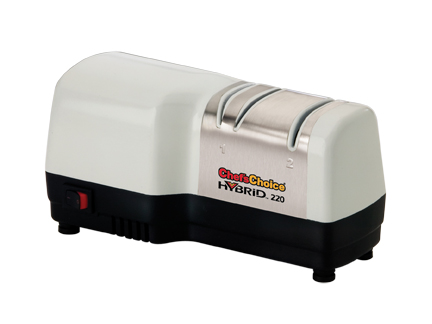
Chef’s Choice® reflects their commitment to create the world’s best professional-quality knife sharpeners and kitchen appliances. Their products are created to perform superbly, last a lifetime and be a pleasure to own.
Nothing beats enjoying an icy treat on a warm and humid day, especially in our local weather! Not surprisingly, more people are making their own ice cream, gelato, sorbet or yogurt. Save money in the long run with your own ice cream maker if you can’t live without these cold desserts!
Here are some tips when shopping for an ice cream machine:
1) Ease of Use
Domestic ice cream machines come in two flavours: those with a freezer bowl and those with a built-in freezer (also known as a fully automatic model).
Freezer bowl: The freezer bowl is a double-walled canister with a gel coolant in the centre. This canister has to be put in the freezer for at least 24 hours before it is placed into the ice cream machine. This means you can only enjoy your creations one day later as planning is needed.
Fully automatic: A fully-automatic ice cream machine is equipped with its own built-in freezer which doubles as a mini freezer as well. This eliminates the need to pre-freeze the bowl and you can have your frozen delights in less than 30 minutes. What’s more, you can make multiple batches of ice cream at one go since pre-freezing is not required.
2) Size matters
Most ice cream machines (whether freezer bowl or fully-automatic) typically have a capacity of 2 litres or less. This should be enough for most households as fresh ice cream should not be kept for more than a week. Smaller batches also means being able to experiment with more flavours and not get stuck with a huge amount of the same flavour. For larger quantities, there are models which can churn out up to 6 litres of ice cream at one go.
3) Material
Examine the components of your potential ice-cream machine to ensure they are not made of flimsy materials such as flexible plastic that can break easily. The paddle undergoes the most wear-and-tear so it should be reasonably durable. Reputable brands generally have paddles that are hard and sturdy (either metal or hard plastic) which can withstand rigorous use. If possible, buy one with a transparent lid to help you keep tabs on the progress of your ice cream.
4) Ease of cleaning
Cleaning the machine can be a hassle if its components cannot be taken apart easily. For compact machines, reaching and cleaning the small crevices will be even more difficult. Most electronic ice cream makers have detachable components like the canister, lid and paddle that can be placed in the dishwasher. Cleaning up on older models may be more tedious.
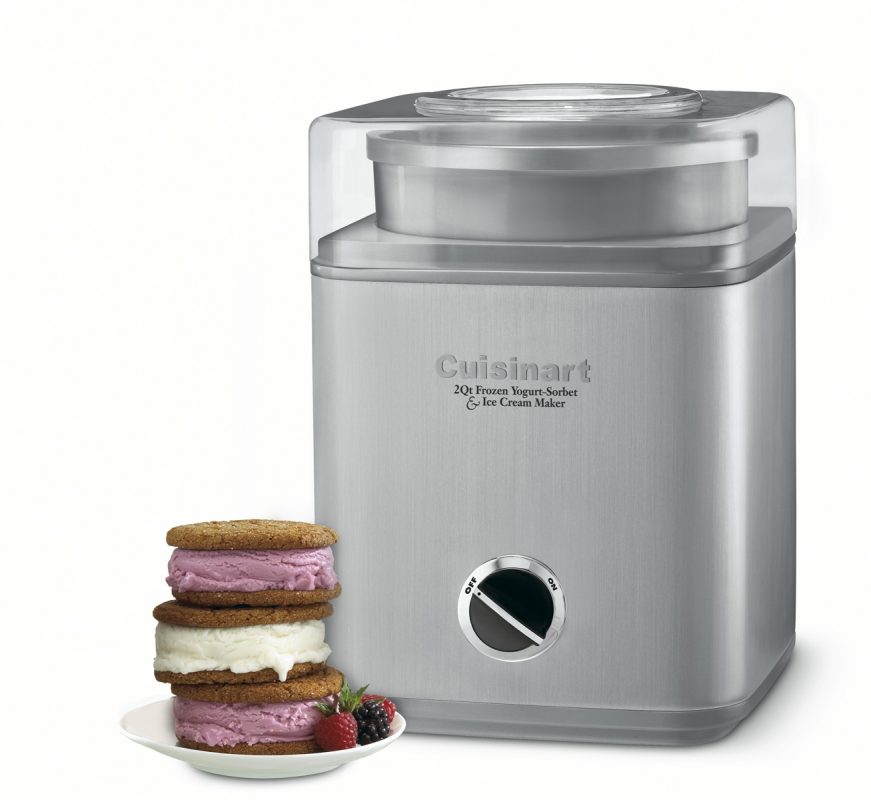
Plugged or unplugged, nobody covers the kitchen like Cuisinart. Cusinart is a full-service culinary resource with a wide array of products, preferred by chefs and favoured by consumers.
Men can be notoriously difficult to buy gifts for. But for dads who love to cook, grill, or drink, great accessories for the kitchen, grill, and bar make the perfect Father’s Day gifts. If you are having problems looking for the perfect gift for him, let us share with you our handy tips to purchase the right item for your dad.

The Mixologist- Dads who love to drink
If your dad already has some wine bottles to drink sufficiently at home, maybe wine tools may do the trick. Enhance his drinking experience at home with our recommended wine tools- HappyHourZ Knuckle Jigger and the HappyHourZ Gravity Release Jigger. If your dad loves soda drinks, Soda Stream Maker Machine offers him a fun way to create his own homemade soda drinks with the assorted flavours of his choice. More economically efficient than a vending machine, Soda Stream Maker Machine will add some effervescence to any dad’s routine.
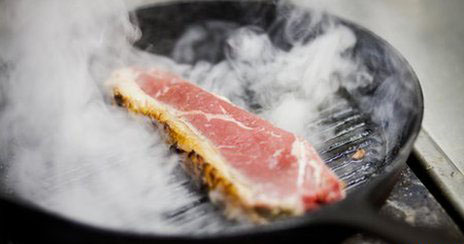
The Classic Cook- Dads who love to cook
Dads who are good in whipping up meals would be more than happy to receive cookware items. Surrounded by solid kitchen tools, there will not be any compromisation on food quality anymore. From a Jamie Oliver Knife Block of 5 Knives to Dolce Gusto Coffee Capsules Dispenser, we’ve got you covered. A new set of knives by Jamie Oliver would be greatly appreciated for dads who cook all the time. Cooking process will be smoother, cleaner and more efficient. Surprise your dad with a smoking gun to add more flavours to his daily dishes . Turning salads, chocolate, meringue, sauces, butters and fruit into unique new culinary sensations is possible by adding a measured amount of natural, cool smoke.
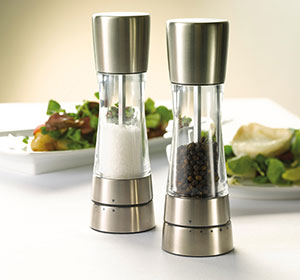
The Down To Earth Cook- Dads who love seasonings
Talking about cooking, we cannot emphasize enough how important seasonings are in our meals. Our Cole and Mason Pepper and Salt Mills set are a great gift for dads that combines the usage of art and function. Another type of pepper mill that is ideal for a father’s day gift is the BUZZ Electric Salt Mill. These electric salt and pepper mills that uses batteries to operate present an easy and elegant way to serve freshly ground salt and pepper.
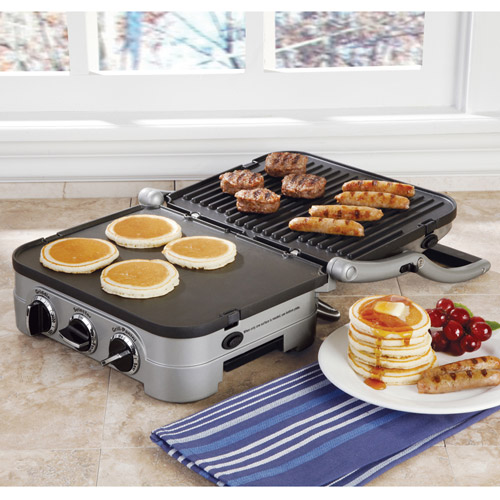
The Inspector Gadget- Dads who love the easy way out
Cooking can be uncertain ground with dads, but eating and gadgetry rarely are. So, here’s a spectrum of gadgets and gizmos to satisfy all sorts of chow-loving dads. The all-time favourite Cuisinart® Griddler® will make your dad pleased than ever. With five separate cooking options, it can handle everything from pancakes to sausages to grilled cheese to steaks, hamburgers and panini. Another cooking gadget worthy of mentioning is the SousVide Supreme Demi. With its sleek and energy-efficient water oven, your dad can now turn out gourmet quality meals with minimal preparation time at home.
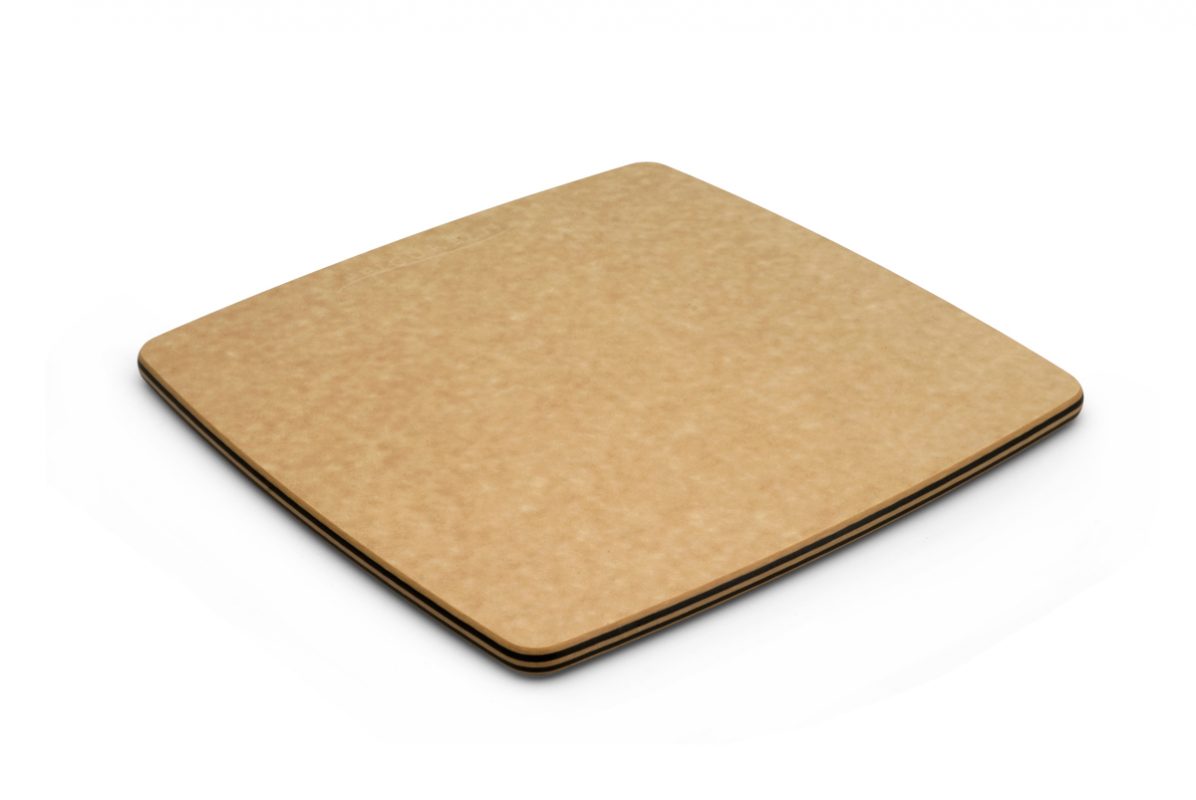
Most kitchens would have at least one cutting board for food preparation work. When choosing a cutting board, the main considerations are its impact on knives and food safety. The perfect cutting board goes beyond the materials used as other factors count, too:
1) Materials
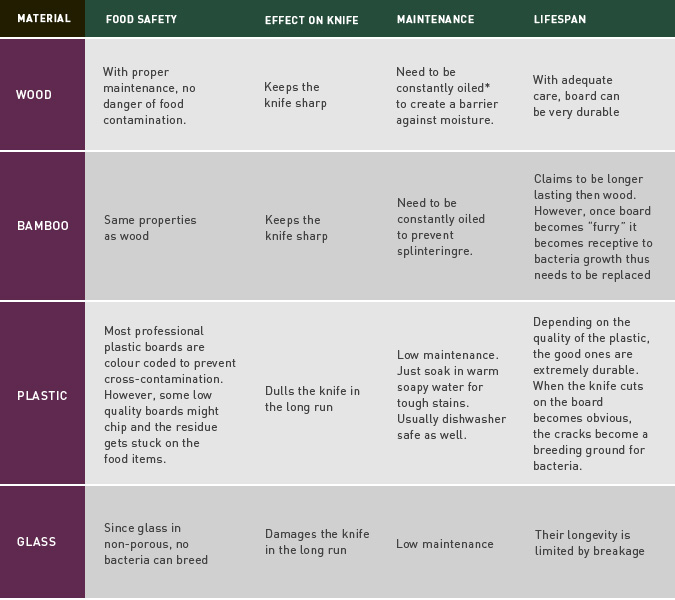
*Please take note that when oiling your boards, do not use cooking oil as it will develop an odour over time. Get food-grade mineral oil from a wood craft store instead.
2) Size
The size of the board you are getting should be taken into consideration with the countertop and storage space available. A general rule of thumb is to get a cutting board as big as possible so you will have more space to work with when prepping. More importantly, you should be able to clean your board properly in the sink. Choose a board that can fit at least half of its surface into the sink so you can rinse with hot water easily or soak in soapy warm water (especially plastic boards).
3) Thickness of the board
Try getting a board that is sturdy enough but not too heavy for yourself. A flexible cutting mat is also useful for prepping vegetables as the mat can be used as a funnel to pour the prepared ingredients without missing a single piece.
4) Why is it important to have at least 2 cutting boards?
It is necessary to have two cutting boards; one for cutting food that can be eaten raw like fruits and vegetables and the other for cutting raw meat, poultry and fish. This prevents cross-contamination where some food items may contain salmonella or E.coli since most food items are not sterile. Only after proper cooking can we eliminate the risk of food contamination. If you intend to carve cooked meat, a separate cutting board is strongly advised.
5) Any recommendations for a good cutting board?
Epicurean (USA) offers a range of cutting boards which uses eco-friendly recycled high density polyethylene from post-consumer recycled plastic milk jugs. These plastic boards have a higher tensile strength than regular boards due to its chemical structure. Another worthy contender is the traditional range from Epicurean, which uses organic fibres that are layered and pressed together with a food-safe resin, creating a highly durable, sturdy and knife-friendly surface.

NON-SLIP SERIES Wood Fibre Cutting Board
Epicurean® Non-Slip Cutting Boards are perfect for smooth, damp food preparation areas and for people who want their cutting boards to stay put. Non-slip silicone corners elevate these boards off of the countertop and hold them in place to prevent them from slipping under the knife. Like all of our cutting surfaces, Non-Slip Cutting Boards are dishwasher safe. The non-slip corners are removable for easy cleanup and greater versatility.
Features:
• Non-slip silicone corners
• Dishwasher
• Eco-friendly – made using materials with low carbon footprint
• Knife-friendly – will not dull knives
• Heat-resistant to 176°C
Flatware refers to table utensils such as knives, forks and spoons. They usually come in matching sets which can enhance the ambience of parties or simple family gatherings. Since flatware is typically used on a daily basis, it might be worthwhile to invest in quality ones. With a dizzying array of flatware choices available on the market, arriving at the right purchase decision might be daunting.
Here are some tips to consider when making your purchase:
1) Material & Maintenance
The type of metal used will determine the longevity and amount of maintenance required of your flatware.
Stainless steel: Best for everyday use as it is considerably easy to maintain and hardy enough for constant washing. The ratio of the stainless steel matters with the most common being 18/10 and 18/0. The top number refers to the percentage of chromium in the metal while the lower number refers to the percentage of nickel present. Chromium increases strength and stainless properties while nickel creates a soft, silvery sheen and fortifies the rust-resistance.
Sterling Silver: For a more prestigious and rustic dining experience, sterling silver would be an ideal choice. This alloy is made up of 92.5 percent silver and 7.5 percent other metals that can increase durability or anti-corrosive properties.
Silver and Gold plating: Silver and gold are electroplated onto the metal, usually stainless steel to give a luxurious look while increasing the brightness and tarnish resistance. Avoid using harsh chemical detergents as it will affect the coating in the long run.
Copper rose and Titanium plating: This is done through ion-plating, a physical vapour deposition process. The advantage this process has over conventional electroplating is that flatwares have a higher durability, wear-resistance and colour brightness. Minimal care is required for maintaining this material.
2) Weight Matters
Flatware comes in different weight class as well: mainly medium weight, heavy weight, extra heavy weight and European style. Prices tend to increase proportionately to the weight.
Medium: Usually found in cafeterias and coffeeshops, it is economical and thus easily replaceable.
Heavy: More durable and overall of better quality than medium weight flatware, this class of flatware is the most common for casual dining establishments and households. It has a long life-span but is possible to be bent by hand.
Extra Heavy: Considered the premium of its class, this range is generally seen in fine-dining restaurants.
European Style: This class is three times heavier and bigger than traditional weight class flatware. Commonly seen in high end establishments and is perfect for formal serving.
3) Types of Flatware
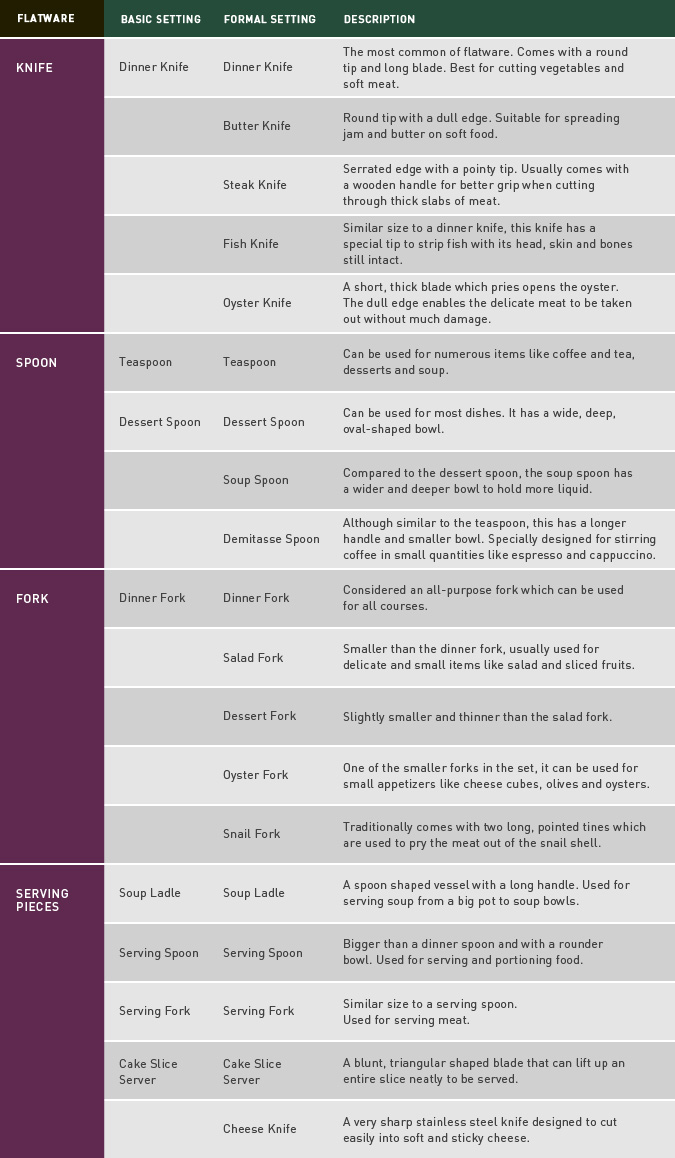
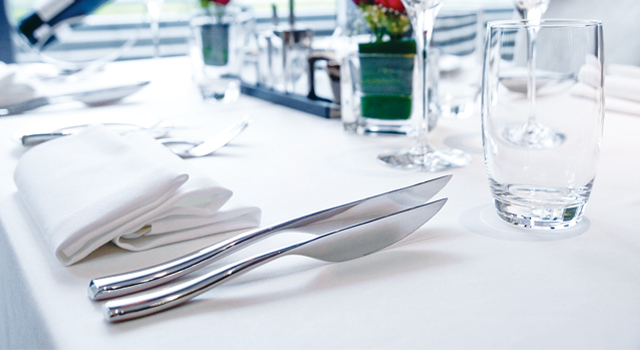
Conceptualised and designed for a refined dining experience, SAFICO is an exceptional collection of stylish stainless steel flatware, holloware and service ware.
This affordable elegance features distinctive 18/10 stainless steel construction that ensures durability without compromising its high quality polish and shine. Patterns range from simple sophistication to intricate textures. All items are commercial dishwasher safe.
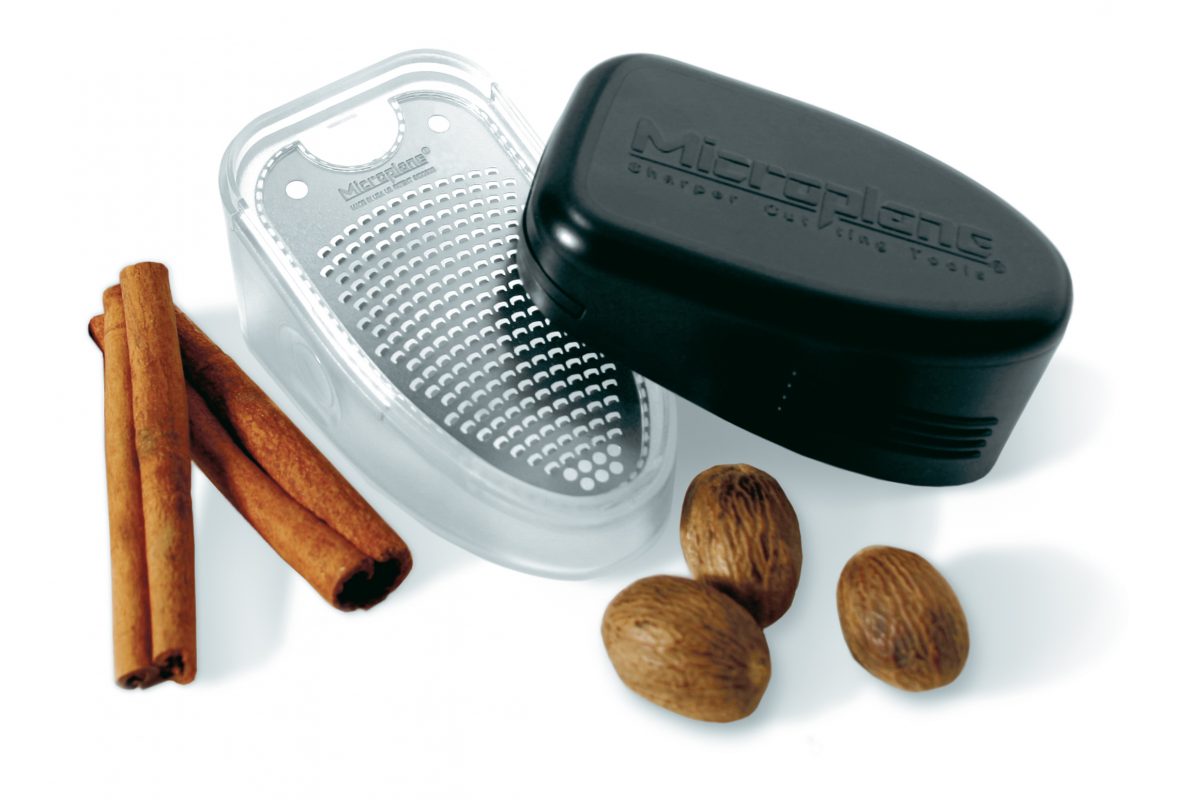
A grater is a utensil with sharp perforations for shredding foods like vegetables or cheese. Since its invention in 1540s, it has gradually become an indispensable kitchen tool . Graters generally come in different grating blade sizes and designs; this might be slightly tricky when choosing the right one for your kitchen.
Here are some tips for your consideration:
1) What is the purpose of your grater?
Some graters are multi-functional, such as the Box grater, which has 4 different grating surfaces while others usually have one flat surface. Depending on your needs, get a simple flat grater if you require mostly grating an ingredient of the same fineness. For cooking enthusiasts, a multi-purpose version can be handy to tackle the varying fineness of different ingredients.
2) What are the different types of graters I can choose from?
Multi-sided: as the name suggests, this type of grater has multiple blade surfaces. It usually comes with a fine, coarse and ribbon grater along with a slicer and is one of the more versatile graters around.
Flat: The easiest to store and most common, this is the easiest grater to handle and sits easily on any bowl to grate over. Ideal for grating small quantities of food, you can also save time by grating over a larger plate to increase the grating surface.
Rotary Table: Designed primarily for grating cheese at the dining table, the rotary table functions like a mini processor. The ingredient is put into the integral drum and grated by turning a handle, allowing minimal contact with your hands. These graters often come with an interchangeable drum that allows for slicing and shredding as well as grating, thus making them a multi-functional tool. The rotary table can also be used for grating nuts, chocolates and vegetables as well.
Microplane: This grater stands out for their super sharp stainless steel teeth. You can choose from superfine (zest, spices), fine (zest, cheese, veggies), medium (coarse zest, cheese, veggies) and coarse (cheese, veggies). Microplane graters produce one of the finest textures compared to other graters.
3) Safety matters
Grating food requires as much caution as cutting meat and vegetables. To be safe, ensure that the grater you select has a protective cover or a grating guard. Some graters have rubber stoppers at the base or edges to reduce unnecessary slipping.
4) Material
Most graters are made of stainless steel as they are often in contact with moisture. Stainless steel is chosen for its anti-corrosive property which is important when in contact with food and this metal is also relatively hard, which means longer shelf life for your equipment. Avoid graters made from tin as they are likely to rust in the long run.
5) Does brand matter?
A reputable brand such as Microplane is popular with consumers for its ease of use, stability and ease of cleaning. A good grater should be able to grate soft and hard items easily, leaving minimal wastage. Microplane graters are chemically created, producing razor-sharp grating surfaces that ensure an ease of use for a prolonged period of time. Most reputable graters come with ergonomic features which help reduce the pressure needed when using the grater. Selecting a good brand ensures that your grater can last for years to come and a safer prepping environment.
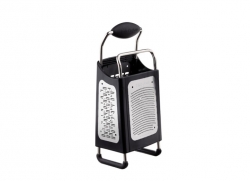
The Microplane® 4-Sided Box Grater features the new Ultra Coarse blade and two of the most popular, Microplane® grating blades: Fine/Zester and Medium Ribbon, – along with an additional fourth Slicer blade. So far this product has been designated Fine Cooking’s Best Overall Box Grater. In January 2009 it took top honors in the Kitchen Hand Tools category of the 2009 Housewares Design Awards.
Features
• Four-sided grater has ultra coarse, fine, medium ribbon, and slicer sides.
• Ergonomic, soft grip handle
• Easy to clean, fine blade removes for easy access
• Materials: Blades made of surgical grade stainless steel. Plastic body. Rubber Feet
• Blades made in USA. Assembled in Mexico
• Cover Included
• Weight 567 g